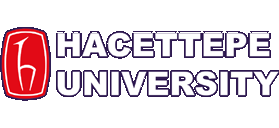ACADEMICS
Course Details
ELE690 - Contemporary Cryptology
2025-2026 Fall term information
The course is not open this term
ELE690 - Contemporary Cryptology
| Program | Theoretıcal hours | Practical hours | Local credit | ECTS credit |
| MS | 3 | 0 | 3 | 8 |
| Obligation | : | Elective |
| Prerequisite courses | : | - |
| Concurrent courses | : | - |
| Delivery modes | : | Face-to-Face |
| Learning and teaching strategies | : | Lecture, Question and Answer, Problem Solving |
| Course objective | : | It is aimed to give the following topics to the students; |
| Learning outcomes | : | Identifying and classifying cryptology problems, Review: ancient and contemporary cryptograpy algorithms, Review: conventional and modern algorithms, Usage: block cipher, stream cipher, messager security, network security, digital signature and related problems; applications techniques. A student completing the course successfully will Identifies and classifies cryptology algorithms, Addresses cryptology algorithms and problems; and designs algorithms, Selects and picks algorithms to solve cryptographic problems and can compare their advantages and disadvantages, L.O..4. Implements techniques and algorithms in projects, thesis and real life applications, L.O..5. Knows algorithms and follows related publications. |
| Course content | : | History; Cryptography and algorithms, Review: Conventional algorithms, Review: Symmetric and Asymmetric algorithms, Usage: Cryptology algorithms, Adapting algorithms mentioned above to practical problems, Practical usage: Private and Public Key Algorithms. |
| References | : | Stallings W, Cryptography and Network Security, Pearson ? Addison Wesley, 2006. |
| Weeks | Topics |
|---|---|
| 1 | Cryptology, Definitions, Services, Mechanisms, Attacks |
| 2 | Symmetric Encryption, Terminology, Symmetric Methods and Models |
| 3 | Block and Stream Ciphering, DES, cryptanalysis attacks |
| 4 | Mathematical Concepts, Finite Fields |
| 5 | Modern Symmetric Encryption Methods, triple DES, Blowfish, RC5 |
| 6 | Symmetric Encryption and Confidentiality, Link Enryption, End-to-End Encryption, Traffic Analysis, Key Distribution, Random Numbers |
| 7 | Number Theory, Review, Definitions, Concepts, |
| 8 | Key Management, Other Public Key Algorithms |
| 9 | Message Authentication and Hash Functions |
| 10 | Midterm |
| 11 | Hash Algorithms, MD5, SHA-1, RIPEMD-160 |
| 12 | Digital Signature and Applications |
| 13 | Authentication Applications, Kerberos, X.509 |
| 14 | Electronic Mail Security |
| 15 | Final Exam |
| 16 | Final Exam |
| Course activities | Number | Percentage |
|---|---|---|
| Attendance | 0 | 0 |
| Laboratory | 0 | 0 |
| Application | 0 | 0 |
| Field activities | 0 | 0 |
| Specific practical training | 0 | 0 |
| Assignments | 13 | 20 |
| Presentation | 0 | 0 |
| Project | 0 | 0 |
| Seminar | 0 | 0 |
| Quiz | 0 | 0 |
| Midterms | 1 | 40 |
| Final exam | 1 | 40 |
| Total | 100 | |
| Percentage of semester activities contributing grade success | 60 | |
| Percentage of final exam contributing grade success | 40 | |
| Total | 100 | |
| Course activities | Number | Duration (hours) | Total workload |
|---|---|---|---|
| Course Duration | 14 | 3 | 42 |
| Laboratory | 0 | 0 | 0 |
| Application | 0 | 0 | 0 |
| Specific practical training | 0 | 0 | 0 |
| Field activities | 0 | 0 | 0 |
| Study Hours Out of Class (Preliminary work, reinforcement, etc.) | 13 | 5 | 65 |
| Presentation / Seminar Preparation | 0 | 0 | 0 |
| Project | 0 | 0 | 0 |
| Homework assignment | 14 | 3 | 42 |
| Quiz | 0 | 0 | 0 |
| Midterms (Study duration) | 1 | 30 | 30 |
| Final Exam (Study duration) | 1 | 30 | 30 |
| Total workload | 43 | 71 | 209 |
| Key learning outcomes | Contribution level | |||||
|---|---|---|---|---|---|---|
| 1 | 2 | 3 | 4 | 5 | ||
| 1. | Has general and detailed knowledge in certain areas of Electrical and Electronics Engineering in addition to the required fundamental knowledge. | |||||
| 2. | Solves complex engineering problems which require high level of analysis and synthesis skills using theoretical and experimental knowledge in mathematics, sciences and Electrical and Electronics Engineering. | |||||
| 3. | Follows and interprets scientific literature and uses them efficiently for the solution of engineering problems. | |||||
| 4. | Designs and runs research projects, analyzes and interprets the results. | |||||
| 5. | Designs, plans, and manages high level research projects; leads multidiciplinary projects. | |||||
| 6. | Produces novel solutions for problems. | |||||
| 7. | Can analyze and interpret complex or missing data and use this skill in multidiciplinary projects. | |||||
| 8. | Follows technological developments, improves him/herself , easily adapts to new conditions. | |||||
| 9. | Is aware of ethical, social and environmental impacts of his/her work. | |||||
| 10. | Can present his/her ideas and works in written and oral form effectively; uses English effectively. | |||||
1: Lowest, 2: Low, 3: Average, 4: High, 5: Highest
